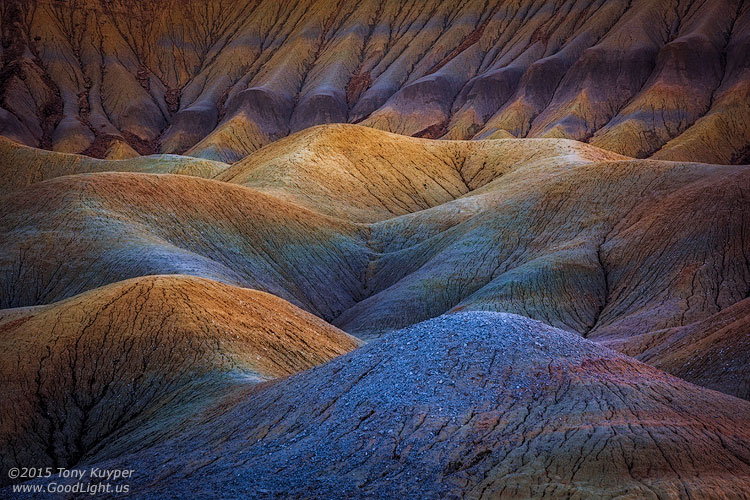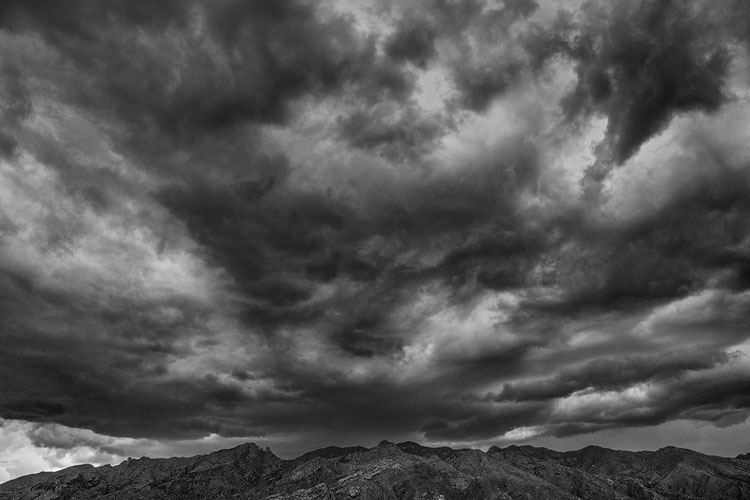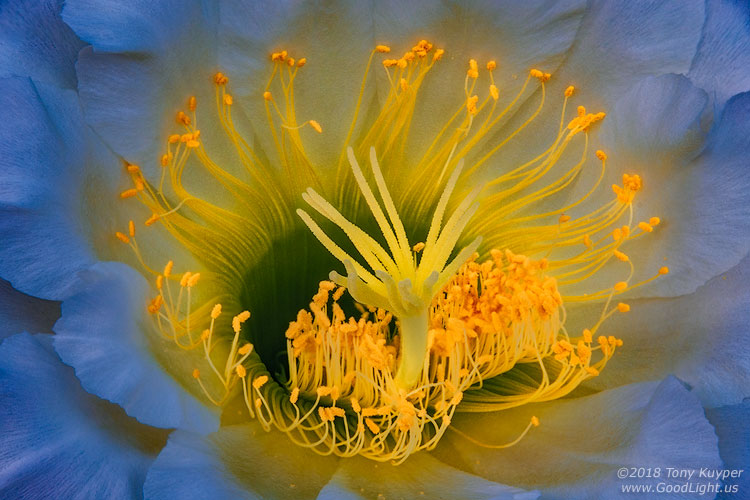Creative Notes
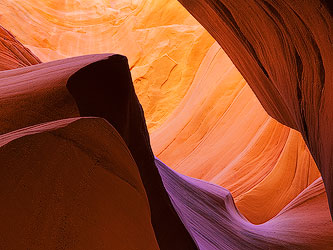 I like light and the desert landscape. I've hiked and photographed in the Southwest deserts for over 30 years. Each year I find new territory to explore with my legs and my camera, and each year I am more amazed with the light that I see. When I first started taking pictures, I enjoyed traveling to well known places to capture the light I had seen in books and magazines. Many times, however, I planned outings centered on catching a particular light event, such as moonrise or sunset, only to find that the image I had envisioned failed to materialize. Light, it seemed, would have its way with me regardless of my intentions. So over the years, capturing light has become less and less my goal. Instead, I increasingly prefer to give in to the unpredictability of the situation and simply allow the light to capture me. My favorite moments are when light quietly chooses to show itself in unexpected ways and in unanticipated places. There is intense focus in these moments as I scramble to allow the camera to participate in the event. And over time, these chance encounters with light have become my favorite images. That's mostly what you'll see in the gallery, less familiar and perhaps even unknown places exposed in light that reveals the natural beauty of the desert that happened to be there when I came along. Hopefully this light will capture you the same way it did me.
I like light and the desert landscape. I've hiked and photographed in the Southwest deserts for over 30 years. Each year I find new territory to explore with my legs and my camera, and each year I am more amazed with the light that I see. When I first started taking pictures, I enjoyed traveling to well known places to capture the light I had seen in books and magazines. Many times, however, I planned outings centered on catching a particular light event, such as moonrise or sunset, only to find that the image I had envisioned failed to materialize. Light, it seemed, would have its way with me regardless of my intentions. So over the years, capturing light has become less and less my goal. Instead, I increasingly prefer to give in to the unpredictability of the situation and simply allow the light to capture me. My favorite moments are when light quietly chooses to show itself in unexpected ways and in unanticipated places. There is intense focus in these moments as I scramble to allow the camera to participate in the event. And over time, these chance encounters with light have become my favorite images. That's mostly what you'll see in the gallery, less familiar and perhaps even unknown places exposed in light that reveals the natural beauty of the desert that happened to be there when I came along. Hopefully this light will capture you the same way it did me.
While I like to think there is a sense of reality in my images, realism is not a guiding principle when I'm taking and developing them. Each picture seems to have a life of its own and a particular way it needs to be expressed. Rather than focusing on making images that are true representation of the light captured by the camera, I much prefer to let them find their own way as they are composed in the field and then developed in Photoshop. There is no formula for doing this. Just a lot of experimentation with different framing and developing techniques looking to find the angles and methods that hopefully allow for some unique, but believable, light to come through in the end. The steps below are three that I follow on each image, but there is wide latitude within the overall process to insure that each image is its own creation.
Take the picture...
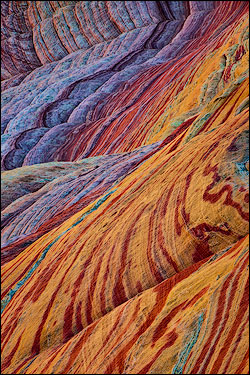 The images on this website were taken with various cameras: a Wisner 4x5 field camera, a Nikon FM2 35-mm camera, a Canon 5D, and most recently a Nikon D7200, the last two being digital. Various lens have been employed over the years, but the 35-mm systems have had zoom lenses to provide compositional flexibility. My only filters have been an 81A warming filter and a polarizing filter. I have been using digital cameras exclusively since 2006. While the original capture files from digitial cameras can be somewhat dull, they offer better processing options than film when it comes time to develop. In terms of composition, I still start off looking through the viewfinder, but more and more I'm finding that live-view on the camera's LCD is useful for judging what the image will look like out of the camera.
The images on this website were taken with various cameras: a Wisner 4x5 field camera, a Nikon FM2 35-mm camera, a Canon 5D, and most recently a Nikon D7200, the last two being digital. Various lens have been employed over the years, but the 35-mm systems have had zoom lenses to provide compositional flexibility. My only filters have been an 81A warming filter and a polarizing filter. I have been using digital cameras exclusively since 2006. While the original capture files from digitial cameras can be somewhat dull, they offer better processing options than film when it comes time to develop. In terms of composition, I still start off looking through the viewfinder, but more and more I'm finding that live-view on the camera's LCD is useful for judging what the image will look like out of the camera.
Rescue the light and move beyond...
The computer darkroom is a necessary part of my work. While extreme processing of digital images was once controversial, it's now widely accepted as part of the photographer's artistic toolkit. My early efforts with digital enhancement were aimed at restoring the original vision of the scene. But the "original vision" concept is very limiting. While important for creating a foundation for the photograph, I no longer expect to know everything about how the final image will look the moment I click the shutter. Each image has more to teach me if I can find a way to listen to it. Adobe Photoshop is essentially the listening device that provides the necessary two-way communication. With it, the image can tell me what it wants and I can act on what it needs. It's often a slow process to find the proper combination of brightness, contrast, color, and saturation, but if I pay attention, the image lets me know what I need to do. Far from being a mechanical, repetitive process, digital development is every bit as engaging and creative as actually being in the field taking pictures. It's a different situation, but it requires the same level of focus and attention. There are some detailed tutorials on my website and more information on my blog that describe some of the methods I employ.
Print the image...
The options for printing images continue to multiply, but I still see prints as an integral part of my workflow. I use an Epson Ultrachrome printer as it has great colors and works well on a variety of papers. For me, seeing the actual print provides important information as to what the image needs to move towards its final form. A photo-quality printer connected to the computer allows me to proof images nearly as fast as I can adjust the data in Photoshop. The printer is an essential component for the developing process. It provides another way to communicate with the image and to allow it to fully communicate its message. Below are some images finished using these three steps. Roll the mouse over each to see what was originally captured by the camera.
